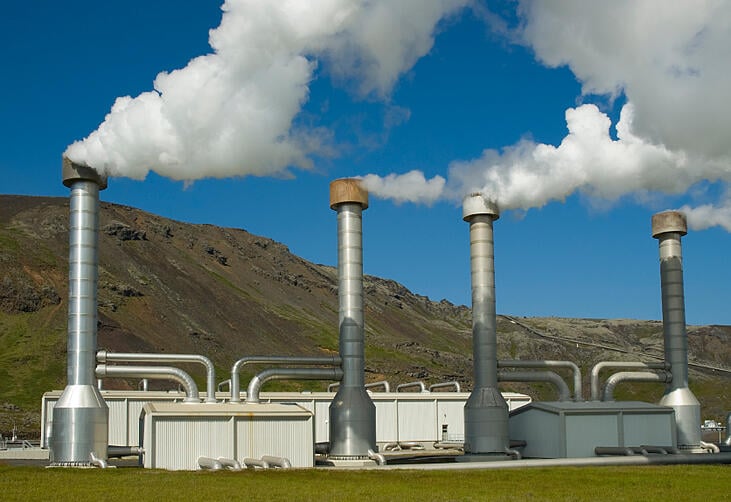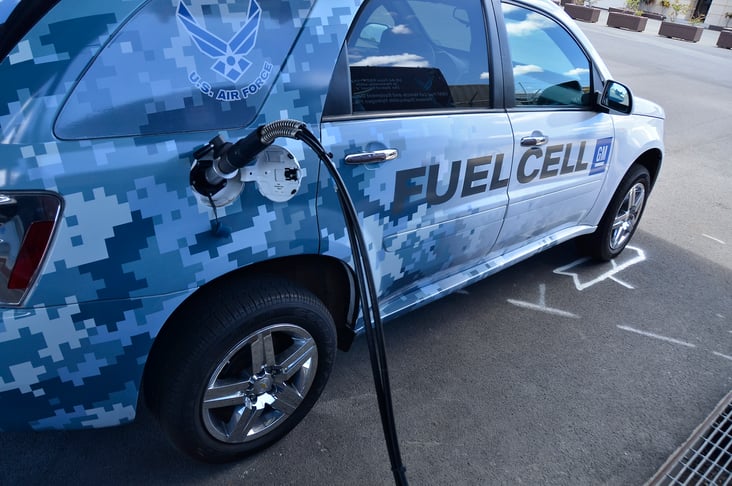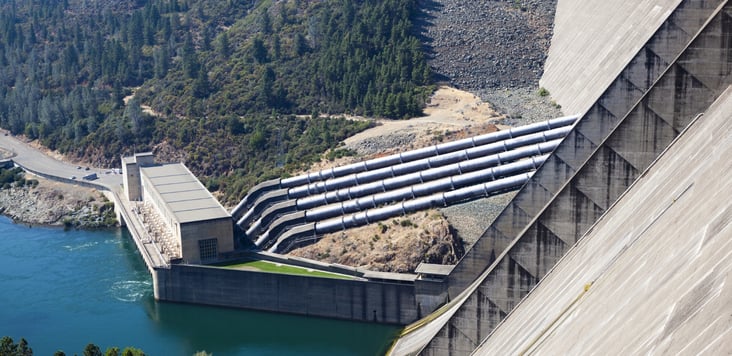This post is one in a series featuring the complete slate of advanced energy technologies outlined in the report This Is Advanced Energy.

Natural gas vehicles (NGVs) are internal combustion engine vehicles designed to run on either Compressed Natural Gas (CNG) or Liquefied Natural Gas (LNG). There are three basic categories of NGVs: dedicated, bi-fuel, and dual-fuel. Dedicated NGVs are the most efficient as they are designed from the ground up to run only on natural gas. In contrast, both bi-fuel and dual-fuel NGVs have two separate tanks, one for natural gas and another for diesel or gasoline. Bi-fuel NGVs can run on either natural gas or a petroleum fuel (either diesel or gasoline), switching automatically when one fuel runs out. Bi-fuel technology is typically used in light-duty vehicles. Dual-fuel NGVs run on a mixture of natural gas and diesel. They rely mostly on natural gas, but use a small amount of diesel to aid in fuel ignition. Dual-fuel NGVs are more expensive, but their higher efficiency makes them an attractive option for heavy-duty vehicles. Most NGVs rely on less-expensive CNG, but some vehicles used for long-haul trucking run on LNG because its higher energy density increases driving range.
Read More
Topics:
This Is Advanced Energy
This post is one in a series featuring the complete slate of advanced energy technologies outlined in the report This Is Advanced Energy.

As droughts and population growth have sharpened the focus on water use, water efficiency solutions have emerged across multiple sectors and technologies. The following is an overview of some key solutions for efficient water use:
Read More
Topics:
This Is Advanced Energy
This post is one in a series featuring the complete slate of advanced energy technologies outlined in the report This Is Advanced Energy.

Geothermal power taps into the high-temperature hydrothermal resources of the earth to generate electricity. There are three main types of geothermal technologies: dry steam, ash steam, and binary. Dry steam plants withdraw steam directly to drive a turbine. Flash steam, the most common geothermal technology used today, pumps high-temperature geothermal fluids at high pressure into a low-pressure tank, which causes the fluids to vaporize (or “ ash”) so they can be used to drive a turbine. A binary cycle is a closed-loop process where low-temperature geothermal fluids are used to heat a second fluid with a low boiling point (e.g., refrigerants or propane), which in turn drives a turbine. Binary cycle power plants are expected to dominate future markets because low-temperature resources are more plentiful and generally easier to access.
Read More
Topics:
This Is Advanced Energy
This post is one in a series featuring the complete slate of advanced energy technologies outlined in the report This Is Advanced Energy.

Hydrogen vehicles are either fuel cell vehicles (FCVs) or internal combustion engine (ICE) vehicles designed to burn hydrogen instead of gasoline. FCVs are actually electric vehicles in which the electricity is produced on board by fuel cells — electrochemical devices that convert hydrogen and oxygen (in the air) directly into electricity without combustion. Pure hydrogen gas is stored onboard the vehicle in pressurized tanks or other means. FCVs can be refilled within 10 minutes at a hydrogen fueling station. FCVs have a range of approximately 300 miles, similar to conventional ICE vehicles, and produce only water as a byproduct. There has also been some development of hydrogen-fueled ICE vehicles, which offer high fuel efficiency and very low tailpipe emissions.
Read More
Topics:
This Is Advanced Energy
This post is one in a series featuring the complete slate of advanced energy technologies outlined in the report This Is Advanced Energy.

Hydroelectric power plants use turbines and generators to convert the kinetic energy of moving water into electricity. There are three major types of hydroelectric power plants: impoundment, run-of-river (diversion), and pumped storage. An impoundment facility uses a dam to store river water in a reservoir, which it then releases through turbines to generate electricity. The height differential (“hydraulic head”) between the reservoir surface and the turbine outlet is what provides the energy for power generation. A run-of-river facility takes advantage of natural elevation changes along a river, diverting a portion of the river flow via pipes or underground conduits to drive turbines and generate power without a dam. Because of this design, the output from run-of-river plants can uctuate throughout the year, whereas impoundment plants generally have steadier output. Pumped hydro storage is a form of bulk energy storage that generates electricity when demand is high. In addition to these three major variants, there is a niche application called in-conduit hydropower, which uses hydro turbines to harness energy from water supply infrastructure such as tunnels, irrigation canals, and pipes.
Read More
Topics:
This Is Advanced Energy




